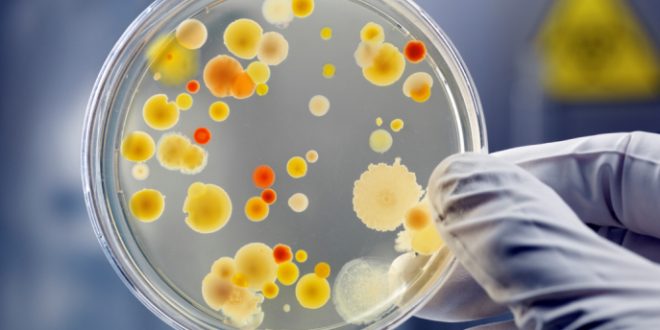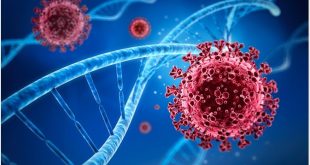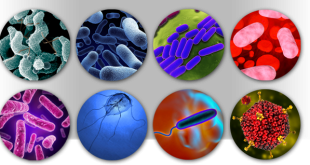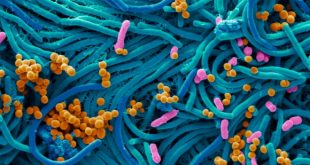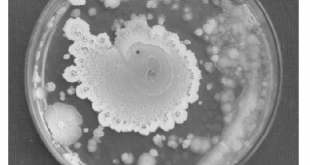Bacteria (singular: bacterium) are microscopic unicellular organisms that thrive in a variety of environments. These organisms can live in the soil, in the ocean and in the human gut. This organisms are available almost everywhere on our earth and are important to the planet’s ecosystems. Some species can live under extreme conditions of pressure and temperature. The physical body is filled with bacteria and is estimated to contain more bacterial cells than human cells. Most of the bacteria in the body are harmless and some are even helpful. A relatively small number of species cause disease. The relationship between humans and bacteria is complex. Sometimes bacteria help us by soaking milk in yogurt or by helping digestion. In other cases, bacteria are destructive and cause diseases such as pneumonia and other diseases.
Best safe and secure cloud storage with password protection
Get Envato Elements, Prime Video, Hotstar and Netflix For Free
Based on biochemical and molecular studies, these types of bacteria have been divided into two domains called bacteria and archaea. Most bacterial and archaeal species take their food from the environment, but some types of bacteria, such as the cyanobacteria, photosynthesize.

Structure
Bacteria (singular: bacterium) are classified as prokaryotes, which are single-celled organisms with a simple internal structure that lacks a nucleus, and contains DNA that either floats freely in a twisted, thread-like mass called a nucleoid or in separate circular pieces which called plasmids. The Ribosomes which are the spherical units in bacterial cell in which proteins are sequenced from individual amino acids using the information which encoded in ribosomes.
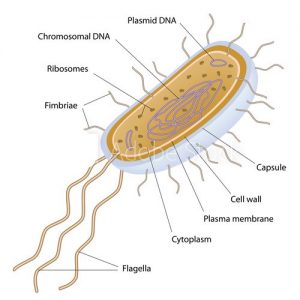
This bacterial cells are usually surrounded by two secured/protective layers: an inner cell membrane and an outer cell wall. Certain bacteria, such as mycoplasmas, have no cell wall at all. Some bacteria may even have a third outer protective layer called a capsule. The whip-like extensions often cover the surfaces of bacteria, the long ones called flagella or the short ones called pili, which help the bacteria move around and adhere to a host.
Characteristics
- Bacteria are unicellular (single celled) organisms.
- They are present almost everywhere in air, in water, in living organic bodies dead or living.
- Generally they grow as a single colony.
- They are prokaryotic, i.e. their DNA (genetic material) isn’t enclosed within a membrane and is one circular chromosome.
- Their DNA isn’t attached with histones (special chromosomal proteins which found in eukaryotes); other proteins are attached with the DNA.
- They lack membrane-bounded organelles.
- Bacterial cell walls almost always contain the complex polysaccharide peptidoglycan. They usually divides by binary fission. During this process, the DNA is copied and the cell splits into two cells.
- Golgi bodies, pinocystis, Mitochondria, endoplasmic reticulum, chloroplasm absent in the cytoplasm
Bacterial Habitats
- Aquatic Environments
- Terrestrial Environments
- Aerial Environments
1. Aquatic Environments
Aquatic environments occupy more than 70% of the earth’s surface. Although oceans occupy most of this area, there is also a broad spectrum of other aquatic environments including estuaries, harbors, major river systems, lakes, wetlands, streams, springs, and aquifers. Water is important for life and may certainly be our most essential natural resource. Microbiota are the primary producers in the aquatic environment (and are responsible for approximately one half of all primary production on the earth).
2. Terristrial Environments
Terrestrial environments are the richest and most complex of all microbial environments. Terrestrial environments are extremely varied, from rain forests in Washington State’s Olympic National Park to the Southern Desert in Arizona, all soils teem with activity and diversity of microorganisms.
3. Aerial Environments
Bacteria are nearly always the foremost abundant organisms found in surface soils in terms of numbers. Culturable numbers vary counting on specific environmental conditions, particularly soil moisture and temperature, Culturable bacteria are often as numerous a whereas total populations (including viable but non-culturable) can exceed 1010 cells/g. In unsaturated soils, aerobic bacteria are usually two or three orders of magnitude more numerous than anaerobes. Anaerobic populations increase with increasing soil depth, but rarely predominate unless the soils are saturated and / or clogged.
Importance Of Bacteria
The ecosystem both on land and in the water depends heavily on the activity of bacteria. The cycle of nutrients such as carbon, nitrogen and sulfur is completed by their incessant work.
Organic carbon in the form of dead and rotting organisms would quickly break down the carbon dioxide in the atmosphere, if not the activity of decomposers. This may not sound bad to you, but realize that without carbon dioxide there would be no photosynthesis in plants and no food. When organisms die, the carbon in their tissues is no longer available to most other living things. Breakdown is the breakdown of these organisms and the release of nutrients into the environment and one of the most important jobs that bacteria do. Although there are many meanings of bacteria which are briefly described below:
1. Bacteria in food
When milk is kept under favorable conditions for bacterial growth, raw milk develops a sour flavor. This change comes mainly by Streptococcus lactis and Streptococcus cremoris and certain lactobacilli like Lactobacillus fermenti. They ferments the lactose sugar (carbohydrate) of milk and produce lactic acid which make the milk taste sour.
Some lipolytic and proteolytic change may also occur but it is not detectable by taste and smell. Proteolysis occurs by Bacillus subtilis, B. cereus, Pseudomonas spp., Proteus spp., Streptococcus liquefaciens etc. Lipolysis which is caused by Candida lipolytica, Achromobacter lipolyticum, Pseudomonas fluorescens, Penicillium spp. etc.
2. Bacteria in agriculture
Soil bacteria play an important role in the salt solution in the decomposition of organic matter. They serve a dual purpose. Primarily, they act as scavengers that remove harmful debris from the earth. Second, they put it back in the soil as plant food. The corpses and waste of organisms (both plants and animals) are decomposed by the activities of the saprophytic bacteria. As a result, water will eventually be purified and turned into an odorless and valuable fertilizer instead of a dangerous and expensive waste product.
3. Bacteria in soil fertility
Some bacteria play an important role in maintaining and others in increasing soil fertility. The fertility of the soil is proportional to its nitrogen content. Nitrogen is an essential part of all living protoplasms. All growing plants therefore need it in their metabolism.
4. Bacteria in nitrification and nitro-fixing
The nitrifying bacteria convert nitrogen from the unavailable form of ammonium salts into the available nitrates. This process of converting unavailable ammonium salts into available nitrates is known as nitrification.
The nitrogen-fixing bacteria are therefore unique in their ability to tap a source of nitrogen that most other plants do not have. This process of nitrogen conversion is known as nitrogen fixation.
5. Bacteria in industries
Humans have used the activities of bacteria for various industrial processes. The butter and cheese industry depends entirely on the activities of the lactic acid bacteria. The hardening of tea, tobacco, and the making of indigo are other examples of beneficial chemical activities by bacteria that have been controlled for the benefit of mankind. The tanning of hides in the manufacture and manufacture of leather sponges also involves the use of bacteria.
Linen cannot be made without bacterial activity. The tough fibers that remain are separated. These fibers are spun and woven into linen, ropes, etc. The preparation of coffee and cocoa also depends on the effects of bacteria. The cocoa beans are white in color and have a rather bitter taste. The bacteria digest the bitter seed coats and give it its characteristic color, taste and aroma.
6. Using bacteria to produce vitamins
Vitamin B is the product of the fermentation of sugars and starch by Clostridium acetobutilicum. Vitamins are used in medicinal preparations.
7. Using bacteria to produce alcohol
Butyl alcohol, acetone and ethyl alcohol are produced in a single fermentation process when a certain bacteria is allowed to act on the cooked corn starch. These products are important commercial solvents.
8. Bacteria in Medicine
In the field of medicine there are many uses of bacteria and they are vast in word. Like-
- Source of Antibiotics: Milder antibiotics of bacterial origin are tyrothricin, subtilin, and bacitracin. Bacillus subtilis is the source of subtilin, and more Bacitracin is obtained from a stain much like B. subtilis. Actinomycetes are filamentous bacteria-like organisms which produce more powerful antibiotics like streptomycin.
- Preparations of Vaccines: These are substances that are used to develop immunity against various diseases in humans. To produce dead or weakened vaccines, disease-producing bacteria or their diluted poisons (antigens) are injected directly into a man to cause disease in a mild form. In response, the host is stimulated to form antibodies. The latter can stay for years in the host’s body, giving it immunity against the same type of bacteria that can later enter their body.
9. Genetic engineering
10. Fiber retting
Bacteria like Clostridium butyricum are wont to separate jute, hemp and flax fibers within the taping process. The plants are immersed in water and once they swell, they’re inoculated with bacteria that hydrolyze the pectic substances within the cell walls and separate the fibers. Alternatively, the plants are scattered on the bottom and retreated naturally because the dew provides moisture. These separate fibers are wont to make ropes, sacks etc.
11. Biotechnology
Biotechnology involves the use of microorganisms, including bacteria and fungi in manufacturing and service industries. These include the manufacture of chemicals such as ethanol, acetone, organic acid, enzymes and fragrances. Bacteria are important in the manufacturing of many food supplements and pharmaceuticals. For example, Escherichia coli is used for the commercial preparation of riboflavin and vitamin K.
12. Pest control
Bacteria also can be used rather than pesticides in biological pest control. Bacillus thuringiensis (also called BT), a gram-positive, soil-dwelling bacterium, is typically used here. This bacterium is employed as a butterfly-specific insecticide under trade names like Dipel and Thurizid. due to their specificity, these pesticides are considered environmentally friendly and have little impact on humans, wildlife, pollinators, or other beneficial insects.
13. Digestion
Bacteria living in the gut of cattle, horses and other herbivores, for example Ruminococcus spp., help digest cellulose by secreting the enzyme cellulase. This is how herbivores are able get the energy they need from grass and other plants.
Also, Escherichia coli, part of the intestinal microbiota of humans and other herbivorous animals, converts consumed food into vitamin K2. This is absorbed in the colon and, in animal models, is sufficient to meet their daily requirement of the vitamin.
14. Tanning Of Leather
Bacteria help purify animal skins so they are easy, clean, and suitable for use. This is an incomplete description of the beneficial activities of bacteria. Anyway, it indicated its extreme importance in everyday life. Due to these beneficial activities, bacteria are called friends of humanity.
Reference
This Article is based on by the lecture of Dr. Mohammad Abdul Karim, Professor, Department of Botany, University of Dhaka.
Some info and pictures have been added by author and from Wikipedia
Reference used for info: Cambridge International Biology Course Book by Mary Jones.
 Plantlet The Blogging Platform of Department of Botany, University of Dhaka
Plantlet The Blogging Platform of Department of Botany, University of Dhaka
